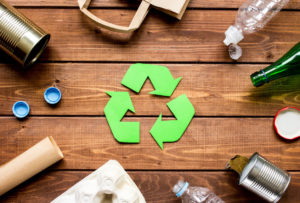
When it comes to evaluating your product’s packaging options, the concept of Extended Producer Responsibility (EPR) is probably not on your radar. But maybe it should be.
EPR is a public policy structure intended to foster the adoption of sustainable packaging practices and mitigate the environmental impacts of product packaging. Traditionally, EPR has focused on producers collecting and recycling the packaging they produce, although recent efforts have expanded EPR to include reducing packaging, using more sustainable materials, and preventing litter.
In concept, EPR is intended to shift financial and management responsibilities for collecting and recycling packaging from local governments and taxpayers to producers and consumers. In reality, costs incurred by businesses due to EPR would likely be passed along to the customer through increased product prices. Hence, the end-user ultimately bears the burden of increased costs tied to EPR compliance.
While it may seem cost-prohibitive to participate in EPR, especially if it isn’t yet mandated for your packaging content, many Fortune 500 businesses are already leading the way, which could spark broader industry change. For example, Coca-Cola and Nestle focus on waste reduction and sustainable packaging initiatives that reduce their carbon footprint.
EPR is rooted in government legislation. Given the many levels of government interested in EPR policy, businesses may ultimately be faced with navigating a morass of federal, state, and local rules to comply with mandated recycled content percentages or certain material restrictions. EPR mandates could be a confusing combination of municipal, state, or federal laws, which could hinder rather than help EPR adoption.
Three ways to begin incorporating EPR into your product packaging strategy:
Identify a Strategy, No Matter How Basic
Though it may seem counterintuitive to take on an initiative that could incur increased packaging costs, developing an EPR strategy could ultimately be beneficial because it could position your company as a thought leader when it comes to sustainability and environmentally-friendly issues. This perception could be a competitive advantage today with eco-minded customers, especially Millennials. Articulating and investing in an EPR strategy may also save on mandated waste/recycling costs down the road. Despite the initial time and money invested, creating an EPR strategy will ultimately pay dividends when your competition is struggling to sort out their strategy.
Ensure Collaboration Among all Departments
It’s important to involve all departments that can help develop, promote and communicate the initiative to your employees and customer base. For example, bringing the marketing department on board to create customer-facing campaigns about the sustainability aspect could educate your customers about EPR and reinforce the efforts your company is taking to reduce its carbon footprint. This can be especially effective for small to mid-sized businesses who want to set themselves apart from larger players in an industry. Additionally, when multiple departments are involved, it’s possible to allocate a portion of the budgetary costs associated with sustainability initiatives.
Find suppliers who can Participate in the Process
Many suppliers are looking for the opportunity to differentiate themselves from their competition—and they just might have resources to lend to the EPR discussion. Find a supplier (or several) willing and able to assist with your EPR initiative by providing an objective perspective and market intelligence. By involving your suppliers early on in the process, they will be in a better position to advise you on affordable packaging alternatives that could help offset the costs of implementing a more responsible packaging solution.
Planning ahead—on your own timeline and without rigid mandates—provides a clear opportunity to develop and implement an EPR strategy that addresses today what will eventually be required tomorrow. Whether reducing your company’s carbon footprint, eliminating unnecessary materials, incorporating recycled components into packaging, or one of dozens of other opportunities, you could find that you are well ahead of the competition and already recouping the cost benefits while others are forced to meet much tougher future standards quickly. The time to act is now.